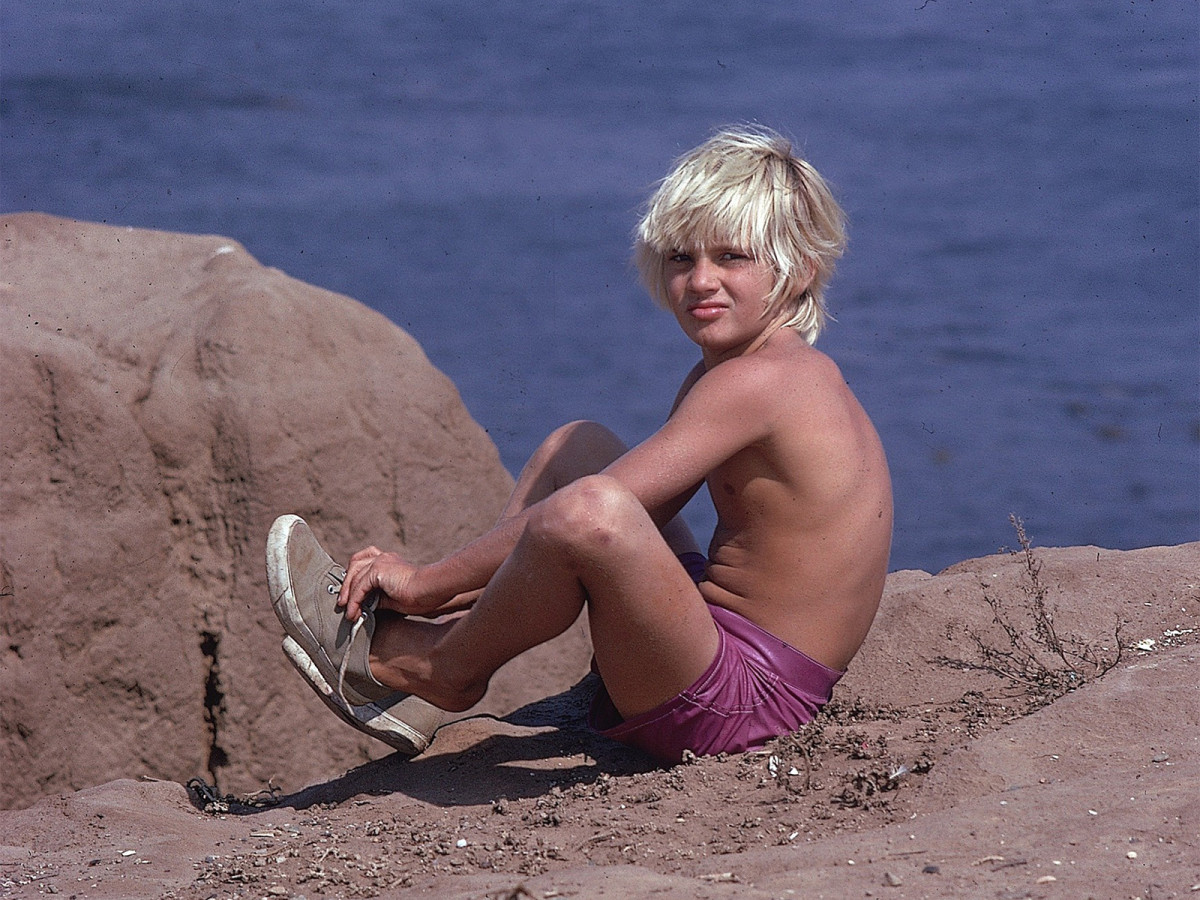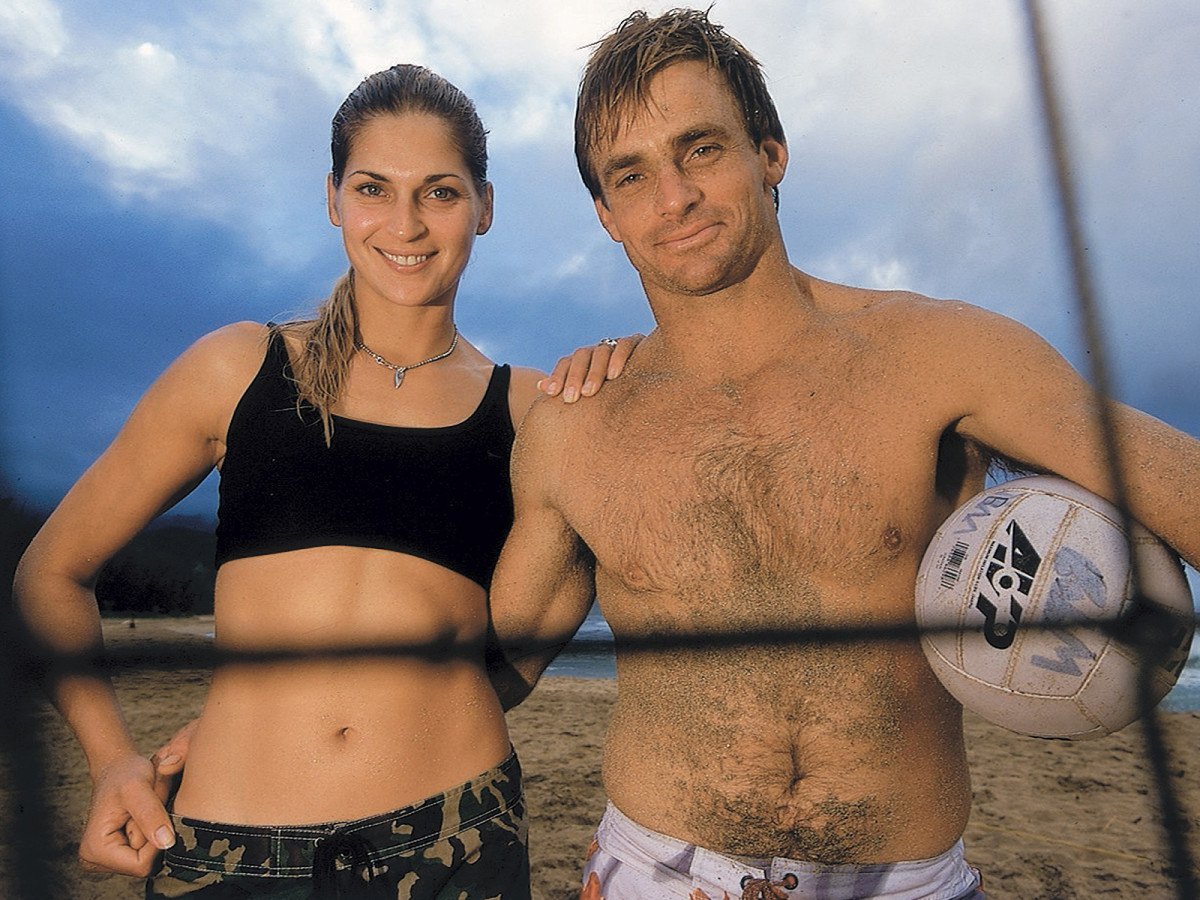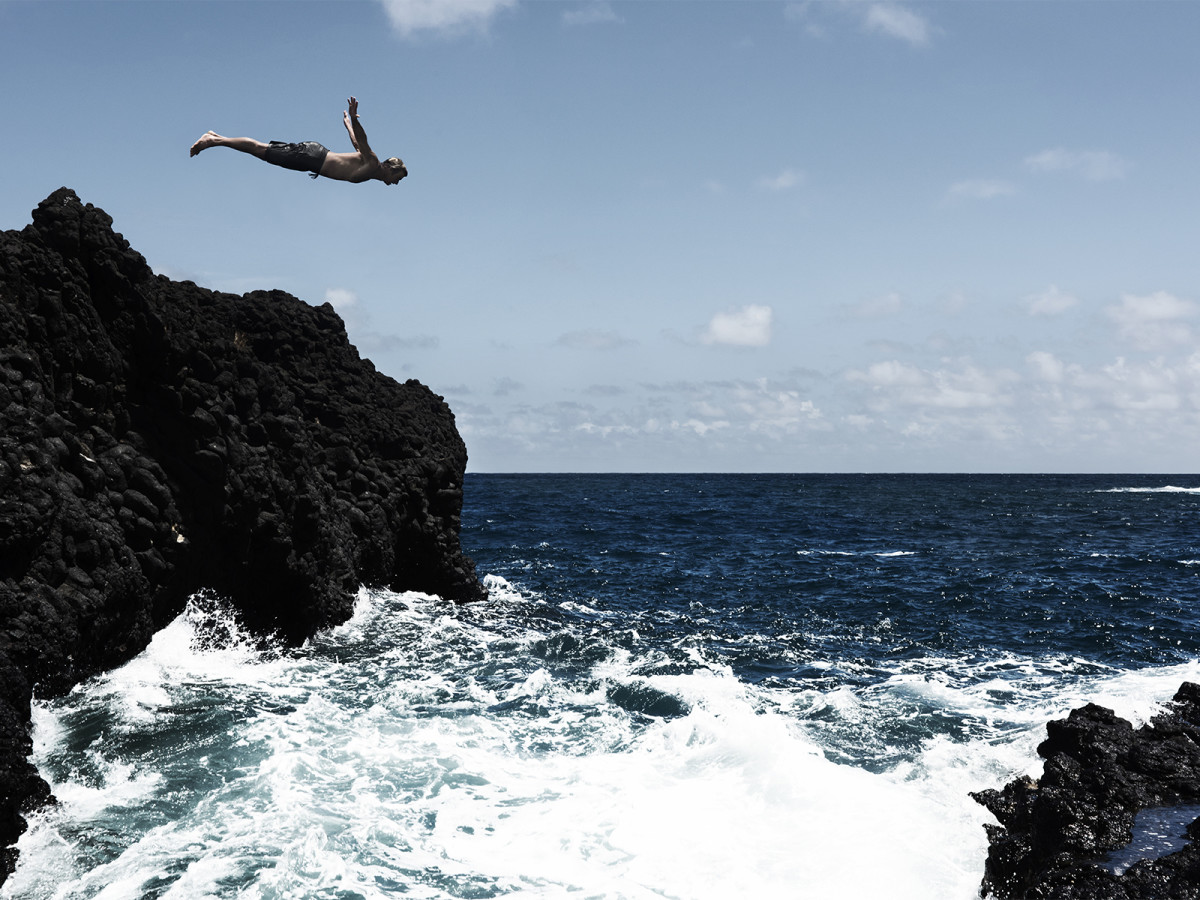Laird Hamilton: Surfing's Wild Man of a Certain Age

This story appears in the Oct. 2, 2017 issue of Sports Illustrated. To subscribe, click here.
On an afternoon in the winter of 2004, big-wave surfer Darrick Doerner launched into a 50-footer at Jaws, the fabled break at Pe’ahi, on the North Shore of Maui. As he began his descent, Doerner found his path blocked by another rider, forcing him down and across the face of the wave. An avalanche of whitewater crashed behind Doerner. The ocean sucked him down.
Not everyone resurfaces at Jaws—which has been called “liquid napalm.” Doerner did, but he got pummeled again. He ended up stranded on a shelf of jagged rocks, awaiting helicopter rescue alongside his friend Laird Hamilton, who had towed him into the wave on a Jet Ski, then tried to save him.
Doerner had spent the bulk of his 47 years in the water, many of them chasing monster swells. But something changed that day. “It was one of the most horrific experiences I ever had, almost dying,” Doerner says in Take Every Wave, a new documentary by Rory Kennedy about Hamilton. “I lost everything on that wipeout. I lost my board, I lost my self-esteem. I never surfed Pe’ahi again.”
A half-dozen years later, back on Maui’s North Shore, Brett Lickle, another member of Hamilton’s inner circle, got crushed by a “tank of a wave” after towing in Hamilton. The fin of Hamilton’s board sliced open Lickle’s leg from the Achilles to the back of the knee. Lickle survived. Still: “That was the end of it for me,” he says in the film. “After that trip, the whole accident, it was like I had my ticket out of the gang. I look at big waves now and I’m just freaking chicken, I’m running for the corners.”

Not Hamilton. After Lickle crashed, Hamilton used his wetsuit as a tourniquet for his friend’s leg before recovering the Jet Ski and racing Lickle to shore for medical assistance. Then he turned around and headed back out to the ocean.
Over the last decade Tim Woodman, a sports psychology professor at the Bangor University in Wales, has studied the psychological profile of men and women who participate in high-risk sports. He has come to believe many have a condition called alexithymia, a difficulty in expressing and experiencing emotions. Unable to feel and connect in their daily lives, they instead leap from the sky, climb peaks and slice down the face of big waves, the better to engage, and then conquer, the most primal sensation: fear.
In Take Every Wave, Hamilton certainly provides an interesting case study. Born in 1964, he never knew his biological father. When he was one, his mother moved to Oahu, where she met and married Bill Hamilton, a talented surfer. Laird grew up on the beach, studying the men out on the water. Lifeguards rescued him from the undertow so many times that they asked Bill, when he surfed, to lock Laird up at home.
One of the few white kids in most of his classes, Hamilton eventually found “equality,” as he puts it, in the ocean. But not before being a huge pain the ass. In the second grade, after he cursed repeatedly in class, his teacher left to get the principal. In the interim Hamilton scrawled every obscenity he knew on the blackboard and then picked up all the chairs and heaved them out the window. Bill didn’t shy away from physical discipline, paddling Laird. His younger half brother, Lyon, surmises that had it not been for surfing, Laird, who dropped out of school in the 11th grade, might have ended up in jail.
But surf culture was in the midst of a boom, and Hamilton was a natural in the water, fluid and inventive. He also embodied America’s idea of a surf god: tall, straw blond, broad-chested, fearless. An older surfer, Buzzy Kerbox, introduced him to modeling, and Bruce Weber shot Hamilton with Brooke Shields for Life magazine in 1983. A director cast him as the villain in North Shore, a goofy 1987 surf movie.
Video: Courtesy of RYOT
From the start Hamilton eschewed traditional surfing contests, saying, “I didn’t reject competition so much as judgment.” But one senses his reasons ran deeper than that. He also sometimes refused to go on casting calls for acting and modeling jobs, surrendering potential paydays. Men like Hamilton don’t always play well with others. On the one hand, he sought isolation. He lived in a remote surf hut without a phone—he built a wooden box at the end of the driveway housing an answering machine that he could check selectively—and traveled the world in search of “the unknown and the undone.”
At the same time, celebrity beckoned. In the late 1990s, after pioneering tow-in surfing—essentially being pulled by a Jet Ski into a swell that is too big to paddle into, allowing enough speed to catch enormous waves—he conquered Jaws. Then, on Aug. 17, 2000, at Teahupo’o reef in Tahiti, he rode what became known as the Millennium Wave, or, in the Lebowski-ese of the film, “the wave of heaviest consequence,” a thick, crashing tube that was previously thought unrideable.

Hamilton appeared on Letterman and 60 Minutes, on the cover of Surfer, Esquire and National Geographic. Authors and filmmakers sought him out. Meanwhile, his wife, retired volleyball star Gabrielle Reece, with whom he has two daughters, was an icon in her own right. Over the years he has made millions off being Laird Hamilton, to the point where now, at 53, even though he’s still in the water every day, he exists as personal brand more than surfer. His own line of clothes, Laird Apparel, launched in 2015, and Take Every Wave, while entertaining and visually stunning, has the feel of a legacy project.
In part because of his fame, Hamilton remains disconnected from the community he helped create. He went through what the film terms a “divorce” from his closest colleagues, including Kerbox, Doerner and Lickle, who were known as the Strapped Crew because they were the first to attach foot straps to a board for greater control on big waves. And while no one doubts Hamilton’s inventiveness, not all appreciate what it has wrought. In particular, tow-in surfing wrecked what, to many, was a crucial element of the sport: the mind-body connection to the ocean. As Nick Carroll, former editor of Surfing, puts it in the film, “Take a normal person and ask them to climb onto a Jet Ski, and instantly they turn into a wanker.”
Hamilton is no wanker—his connection to the water is clearly real and passionate—but, while respected, he does not always seem beloved. At various points in the film, other surfers call him “an egomaniac” and “arrogant.” Then again, perhaps these are necessary qualities for someone attempting to keep doing what he does well into middle age.
The majority of Take Every Wave focuses on the what and the how of Hamilton’s life. We see him applying Velcro to boards to create surer footing for booties. We see him meeting with an America’s Cup sailing team, trading notes on his latest passion, foil surfing, which uses a board with a hydrofoil that extends underwater, making it appear that the rider is hovering above the water. We see him wearing duct tape on a broken ankle. We see him eating kale salad—he is Paleo—and consulting with his doctor, plotting the best strategies to surmount an arthritic hip and a balky back.
'You Can't Give In': Monty Williams On Life After Tragedy
All of this is interesting, but the most compelling parts of the film—and Hamilton’s larger story—concern the why. Reece touches on his moodiness, and how he needs friction to survive: “If there is something that is uncomfortable, Laird veers toward it and not away from it,” is how she once put it. Meanwhile, his peers marvel that he has “all the frickin’ balls in the world” and posit that he was born with a “fear defect.” Hamilton frames it differently, saying he uses fear “as a tool” and that he has developed a “relationship” with it. Heading out after that Lickle crash? He did so because, as he told me, he didn’t want “that doubt seed to grow.” (So what is he afraid of? “I’m afraid of my children not being O.K.,” he says. “I fear those things that I have the least amount of control over, that are out of my hands.”)
Often, extreme athletes such as Hamilton are considered inspirations—exaggerated versions of our best selves. Dean Potter began climbing to overcome his childhood fear of falling to his death; ergo, shouldn’t we be able to face our own, more mundane fears? In Potter’s case his life ended tragically during a wing-suit flight in Yosemite Valley, in 2015. Still, he died on his own terms, and, as the climber Alex Honnold wrote of Potter in Time, “Dean was making his choices clear-eyed. He knew the risks in his life, and he was still willing to pursue his dreams. How many of the rest of us live with that kind of intention?”
It is a good point. But what if the reckoning comes not when the lights go out but when we cannot pursue those dreams in the first place? In The Rise of Superman: Decoding the Science of Ultimate Human Performance, author Steven Kotler recounts an email he received from Chris Malloy, a big-wave surfer and filmmaker. “I hope you talk a little about how utterly f----- we can become when we get too old or broken or smart to keep it up,” Malloy wrote. “Not all of us experience a happy life after doing this s--- for a couple of decades. I bet there are some PTSD similarities. It’s funny, I read Sebastian Junger’s War and I learned something: The guys coming home are all screwed up, not because they saw people die as much as they missed the rush. I would never put myself in the same category as those fighting men, but it can be hard to get excited again. Ever. And that feeling sucks.”
When I spoke with Hamilton by phone, at 10 a.m. on a recent weekday, he had already been training for hours at his house in Malibu. After waking before dawn, he logged an hour in the sauna at 175°, one of two such daily sessions. He had also iced and worked out in his pool, using dumbbells to mimic activities such as running on the bottom of the sea with a boulder, which he considers the ultimate ocean workout.

Hamilton says he does not think about what comes next. “I’m not going to fall victim to what I’m supposed to do at any certain age,” he says. “We subject ourselves to a lot of dogma but also social pressure—‘Oh, this is how old you are now, this is the only thing you can do.’”
Instead, he believes that if he can just keep starting over—as when he took up windsurfing, then put straps on boards, then moved to foil surfing—he can stay engaged. “If you’re a straight-up adrenaline junkie and it’s all about you falling out of the sky to get that feeling, that’s going to be a more difficult process,” Hamilton says. “But if you’re connected to the process of learning, then there are a million things you can do. Hopefully, we can evolve to a point where we can sit under a tree and get that through meditation and breathing.”
Hamilton’s optimism is impressive, even if it’s difficult to imagine him feeling fulfilled through mindfulness alone. Still, his devotion is an (earned) luxury. Most of us are bound by the constraints of our bodies and lives. Sneaking in 45 minutes at the gym counts as a win; two hours in the sauna isn’t possible or, if we’re being honest, even alluring. Easier, especially as we grow older, to let go of certain expectations, and sensations. For Hamilton it’s the opposite. He trains harder than most professional athletes half his age.
In his 1973 book, The Denial of Death, anthropologist Ernest Becker argued that everything we do in our lives is, in essence, a defense mechanism against mortality. Life is different, though, for elite athletes, who die two deaths. The second is the one that awaits us all. The first comes when they can no longer compete in their chosen craft, the one that provides meaning and identity. Perhaps this provides insight into the motives of Hamilton and fellow seekers. Perhaps the reason they take such outsized risks is because, for them, that death is the more terrifying of the two.
